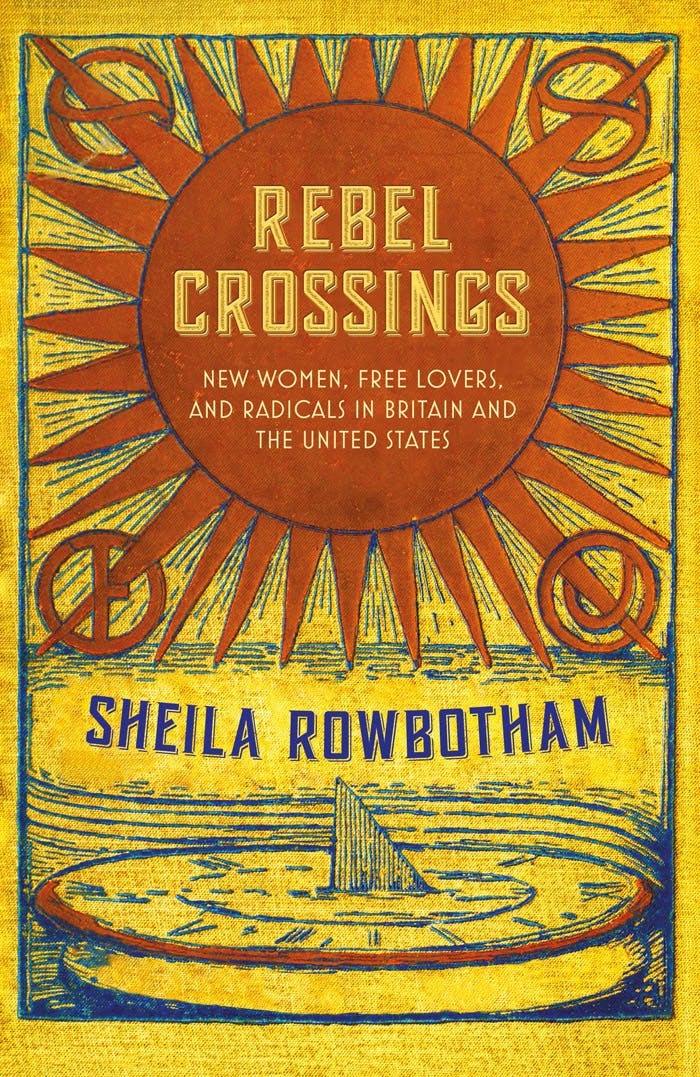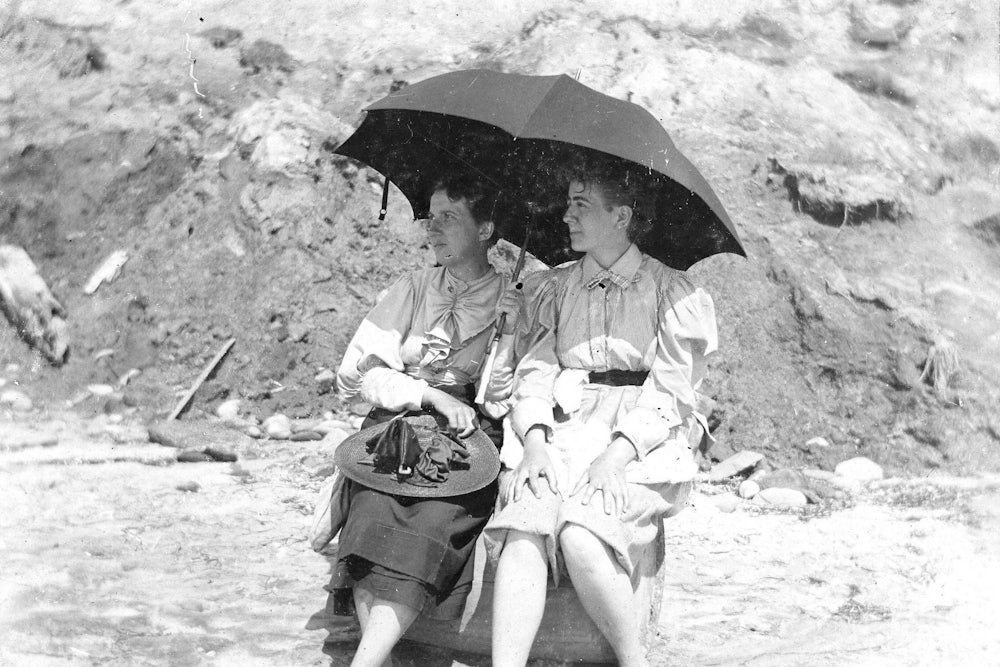There’s a tension at the heart of biographies of radicals. No matter how much they emphasize the “times” in their exploration of “the life and times,” biographies are pushed by the conventions of the genre to highlight the individual, above all else. The biographer is inclined to find interest in those things that makes the biographer’s subject distinct from her social world: This is, presumably, what made her a compelling subject to begin with. When faced with socialists and radicals whose lives were defined by community and mass struggle, biographies steeped in individual detail too often give us, at best, misleading stories of individual heroism. At worst, they give us takedowns, designed to prove that all that fellow feeling was just a cover for personal misdeeds.

With her new book, Rebel Crossings, renowned feminist historian Sheila Rowbotham suggests how the joint biography might offer one way around this trap. Rowbotham tells the stories of six radicals who, throughout the late nineteenth and early twentieth century, shaped each other’s lives through their writings, politics, friendship, and romances. None of them are household names, even to those well-versed in socialist and radical history. There is the Scottish radical, Robert Allan Nicol, and Miriam Daniell, who left her husband and fled for America with Robert. There, in the spirit of utopian defiance, they named their child “Sunrise.” There are, too, Miriam’s good friends, Helena Born and Helen Tufts; William Bailie, who came to socialism as a Manchester basket maker; and Gertrude Dix, a British novelist who became romantically involved with Robert after Miriam’s death.
Rowbotham makes the case for her subjects not by arguing that they are unjustly neglected major figures in radical history. Nor does she present them as “average” representatives of their time, protagonists of history from below. There are cameos from Eleanor Marx, who encouraged unions to welcome women, as well as William Morris, whose annual lectures to a Sunday group of Manchester socialists shaped the young William Bailie. But, as in the best historical novels, the most famous figures are not the focus. Instead, Rowbotham’s subjects represent the spirit of the period’s radicalism as it come into being through meetings, small publications, and endless discussion. Rowbotham’s subjects don’t set out to make history, but to be a part of it. They did not write the period’s most definitive radical documents, but they read, reviewed and debated them. They did not lead the largest demonstrations but they raised money and agitated for them. For contemporary readers, who read, write, agitate for social change, and sometimes fall in love along the way, they feel very much like people we could imagine ourselves to be.
It’s a history in which milieus and magazines are as central as the six main subjects. To tell the story of these radicals—who wrote extensively, but about whom little has been written, Rowbotham makes impressive use of archival sources. She goes to the little magazines in which they published and debated, and to the papers of organizations that shaped their intellectual work. An early guiding star is the Bristol Socialist Society. Miriam joined this group, and agitated on behalf of chocolate-factory workers and many others in a massive strike in 1889— the “Great Revolt of Labour at Bristol”—which won an eight-hour day.
The book suggests that Miriam’s political work may have caused her divorce, from her first husband, a Bristol lawyer named Edward Tuckett Daniell, in 1894. A more obvious explanation might be infidelity: Miriam had written an impassioned pamphlet, The Truth about the Chocolate Factories, with Robert Allan Nicol. At some point since their meeting in 1889, they had become lovers. By 1891, Miriam was pregnant with Robert’s child. Yet in Rebel Crossings, Rowbotham suggests that the pamphlet itself would have been enough to make Daniell end the marriage. His wife’s agitation was bad for business. Daniell has “greatly objected” to the document and had warned that he would take “steps to stop it.” Miriam countered that “she would leave his house,” and did just that. Rowbotham writes: “According to the Morning Post, ‘She went to live with some Socialistic friends in Bristol against his wishes and consent.’” Without the Bristol community, a young woman like Miriam would have faced almost certain destitution. Even when the story is about individual rebellion, it was communities of radicals like this that made such lives possible.
Rowbotham was born in 1943 and came early to Marxism, encountering Eric Hobsbawm and E. P. Thompson while studying at St. Hilda’s College, Oxford. She was an organizer of Britain’s first National Women’s Liberation Conference in 1970. Three books she published in the 1970s,—Hidden from History; Women, Resistance, and Revolution; and Woman’s Consciousness, Man’s World—traced the feminist threads in revolutionary societies across time and place. They were crucial in establishing women’s history as a field in Britain and in demonstrating that feminism itself had a history that was central to the left. She described Women, Resistance, and Revolution as an effort “to trace the fortunes of an idea”:
It is a simple idea but one with which we have lost touch, that the liberation of women necessitates the liberation of all human beings. I have tried to pursue it as a living reality as it came into and out of the lives of particular men and women, and as a political reality as they organized to act upon it…It will be a useful book only if it is repeatedly dismantled and reconstructed as part of a continuing effort to connect feminism to socialist revolution.
Coming at a moment when revolution seemed imminent, Rowbotham began with the history of women’s revolts against the church and looked at the feminist strains of the revolutions in China, Russia, and newly liberated postcolonial countries, those who, in the parlance of the times, aimed to make revolution in the revolution. In Hidden from History, she traced the emergence of feminism, both among middle-class reformers and socialists throughout the nineteenth century. Even as the intense period of radical agitation passed, her work has remained vital, turning in recent years to subjects, including a biography of Edward Carpenter, as socialist poet and early advocate for gay rights who influences many of the figures in Rebel Crossing and Dreamers of a New Day, a far-reaching account of women and modernism.
Like the radicals of the sixties who shaped Rowbotham, the subjects of her new book connected their political action to their pursuit of personal transformation and spiritualism. In another anticipation of the political culture of the 1970s, she terms this move “prefiguration”: the belief that in creating communities of solidarity we begin to create another world. Political radicals steeped in daily organizing are often suspicious of prefiguration, seeing it as a withdrawal from struggle that follows disillusionment and burnout. But Rowbotham suggests that many radicals combined struggle and personal growth throughout their lives. At one point, as if to suggest that even the most hippy-dippy ideas may sometimes be rooted in practical acts of resistance, she notes that women latched on to the trendy mystical ideal of intercourse without male orgasm as a form of contraception, years before the legal birth control movement took hold. And while the many utopian communities and retreats never fulfill every promise, they offer the women especially a chance for fellowship and the space to do creative work.
To imagine liberation from conventional gender roles, as Helena, Gertrude, Miriam, and Helen did through their writing, in their political work, and in their own lives, was unimaginable, outside the context of a dynamic international left willing to entertain utopian ideals even as it fought daily battles. The socialist societies, Whitman clubs, little magazines, retreats, and weekly discussion groups created countercultures in which those would have otherwise been outcast could thrive. While Rebel Crossings doesn’t belabor its historical lessons or draw explicit contemporary parallels, it too is animated by this idea, as essential now as ever, that socialism and feminism are inseparable. This is true not only because without a vision for economic justice, any feminism will fail the vast majority of women, although this is certainly the case. It is because both are central to any meaningful vision of liberty, in which all are free from whims and cruelty of others, whether those others be a boss, a patriarch, or a set of conventions.
There is some irony in that utopian visions of socialist liberation brought the five Britain-born among Rowbotham’s subjects across the Atlantic. To come to the United States in search of a paradise for “new women, free lovers and radicals” brings to mind Rick’s comment in Casablanca, that he came to the desert for the waters: He was misinformed. While all found spaces in which radical ideas could thrive, opportunities for concrete labor agitation were fewer. The Bristol Socialists had been able to win concrete victories through strikes and mutual aid,but they found the atmosphere in the United States more repressive; in 1901 the assassination of William McKinley by an anarchist sympathizer led to the arrest of activists and the suppression of anarchist publications.
Rowbotham doesn’t, however, gloss over the dark shadows in this story of radical hope. There is the specter of Ellen Bailie, William’s first wife, whom he leaves behind with her children. Helen found these children so exasperating she came to question her commitment to progressive education, in place of traditional nineteenth century discipline. Rowbotham describes the left-behind wife as most likely “overwhelmed, unhappy, erratic, and chaotic”; Helen herself could only see Ellen as a burden who sought to manipulate her sympathies, not as someone who might have thrived if she’d had Helen’s opportunities to become political, liberated or creative. There are also the disappointments of Robert and Gertrude’s children after Robert detaches himself from their family; their daughter Margot’s unpublished novel reads as a dark echo of her mother’s novels about the possibilities for new generations of women.
And there were hard limits to what freedom for the “new woman” entailed: Even in most bohemian circles, living together or having a child outside marriage was a bridge too far. In 1906, Helen, in a precarious position as William’s unmarried partner, wrote an article titled, “What is a Mob?” The title echoed middle-class fear of radicals, but for Helen, it was a crowd that menaced the Russian writer Maxim Gorky on a trip to Brooklyn that frightened her. His sin? “It was revealed he was not married to his woman companion.” Even in radical circles, the movement for birth control only gained traction in the 1920s.
Even so, the shape of these lives as Rowbotham presents them impress above all the possibility of dynamic, lifelong radicalism, through periods of revolutionary possibility and reaction alike. Neither history from “above” or “below,” it’s a history of solidarity, and a necessary reminder that intellectual work can be as collective an enterprise as struggle.
